We replace pads in case of maximum permissible wear of their pads - the minimum thickness of the pad, including its base, must be at least 6 mm
The pads also need to be replaced when the brake disc is replaced, the pads become oily or have deep grooves, cracks and chips, and also if the pads peel off from the base of the pads.
We carry out work on a flat area, a viewing ditch or overpass.
If the fluid level in the reservoir of the hydraulic brake drive is at the MAX mark, then before installing new pads, we pump out part of the fluid from the reservoir with a syringe or a rubber bulb.
This operation must be performed so that when the piston is pressed into the wheel cylinder of the brake mechanism during the installation of new pads, fluid does not flow out from under the reservoir cap.
Remove the front wheel.
Before installing new pads, it is necessary to move the piston of the wheel cylinder inside the cylinder as much as possible.

To do this, inserting a screwdriver with a wide blade through the hole in the caliper between the base of the inner pad and the piston and leaning on the pad, press the piston into the cylinder
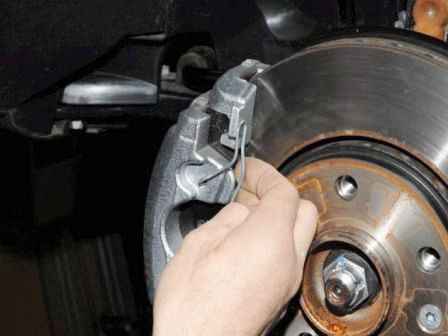
Hand pry the spring retainer
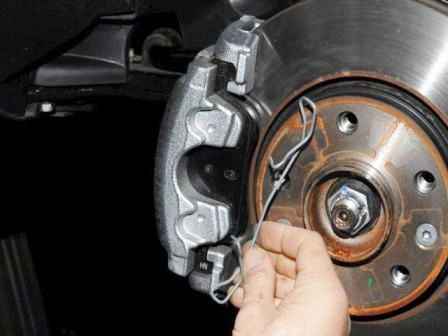
Remove the spring retainer
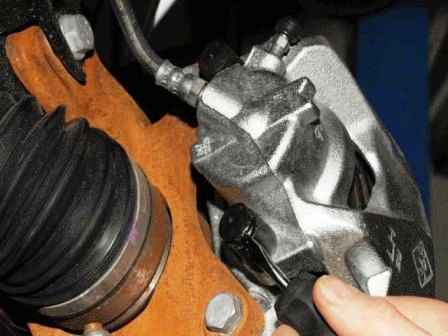
Pry off the bushing caps with a slotted screwdriver
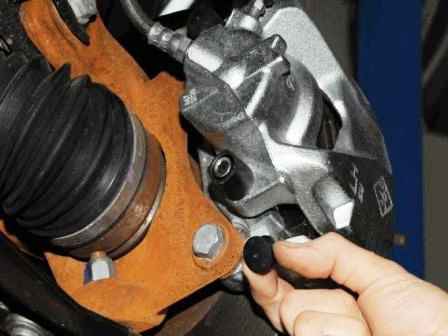
Remove the caps of the bushings of both guide pins
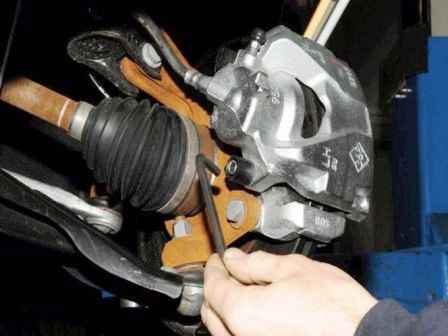
Unscrew the lower guide pin with a 7 hexagon
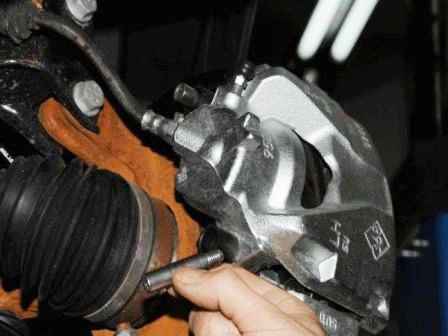
Remove the guide pin.
Also unscrew and remove the upper guide pin
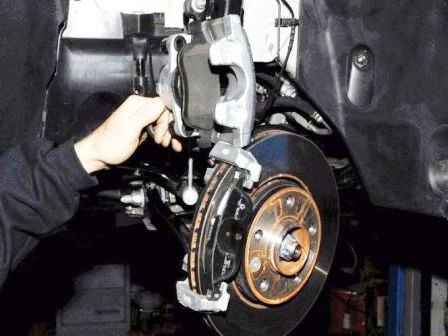
We raise the caliper (without disconnecting the brake hose from it) together with the inner shoe
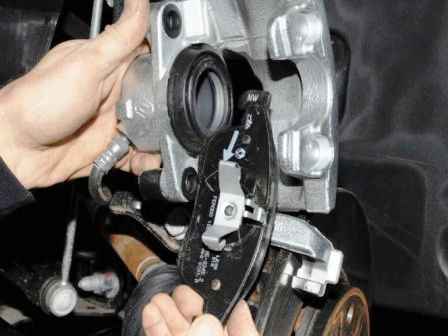
Overcoming the resistance of the petals of the spring (on the base of the pad) entering the piston hole, we take out the inner pad.

Remove the outer shoe from the shoe guide.
With a metal brush, we clean the seats of the pads and guide pins from dirt and corrosion.
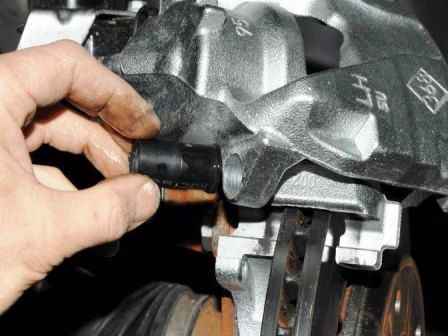
Before installing new pads, check the condition of the rubber bushings of the guide pins.

If necessary, replace them
The photo shows the front brake pads of the left wheel





